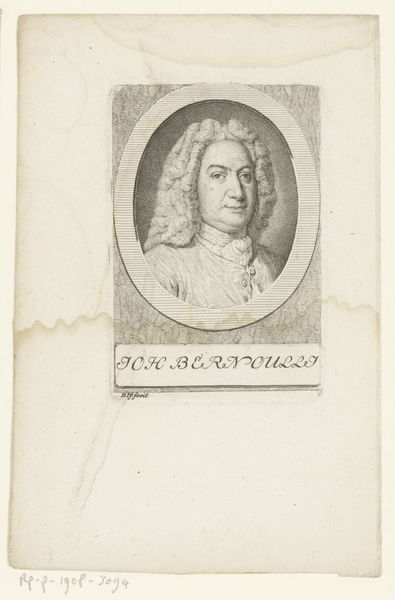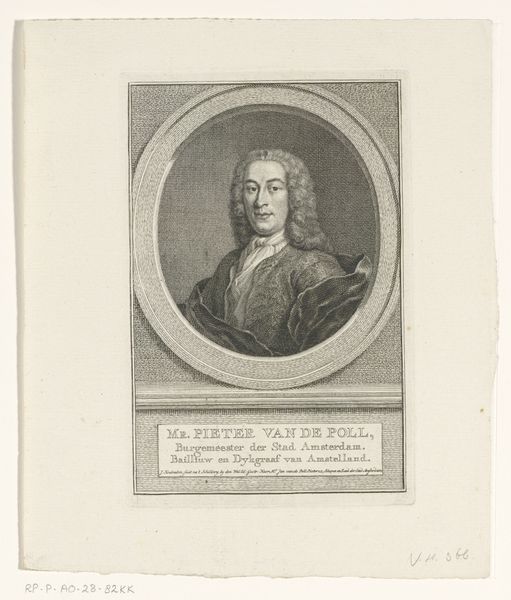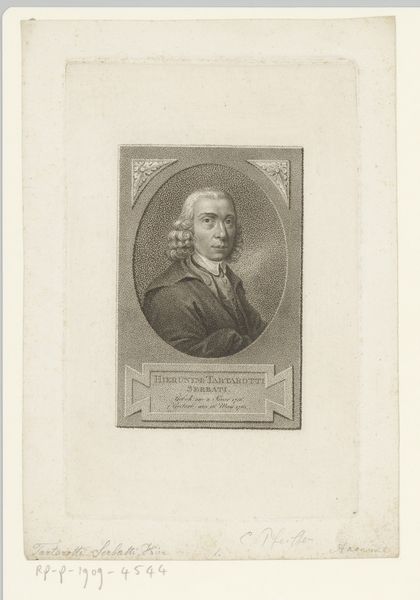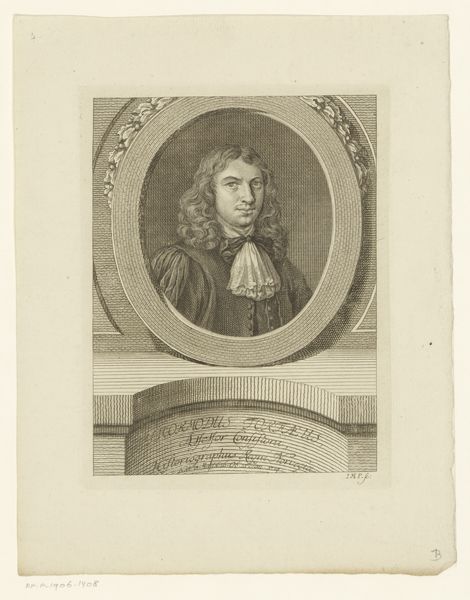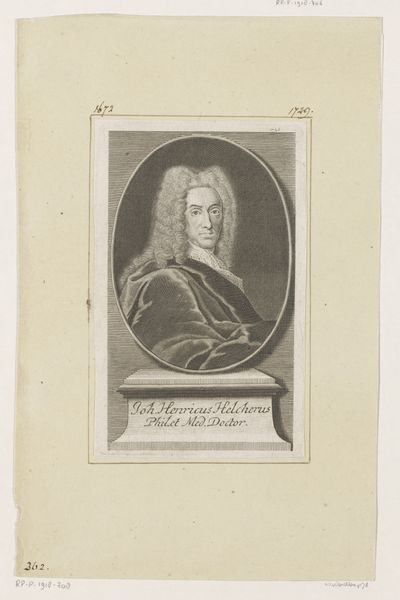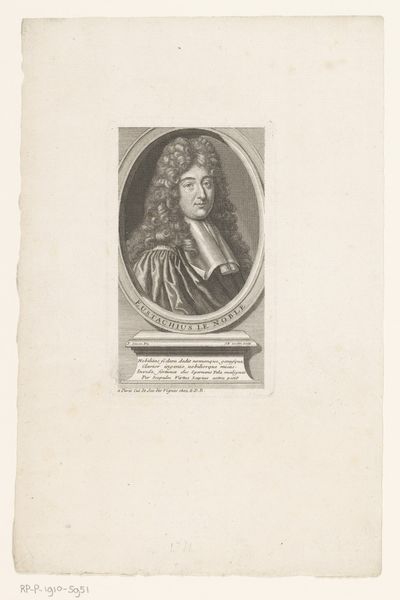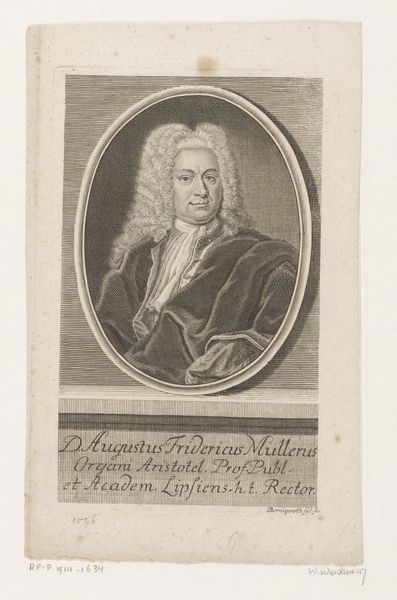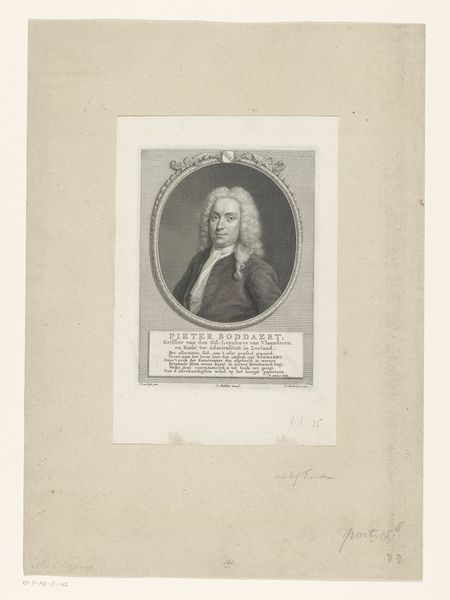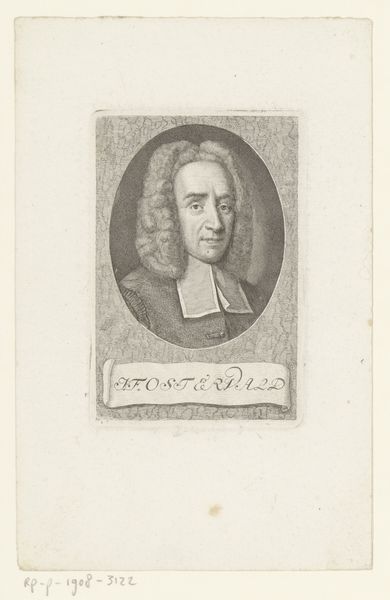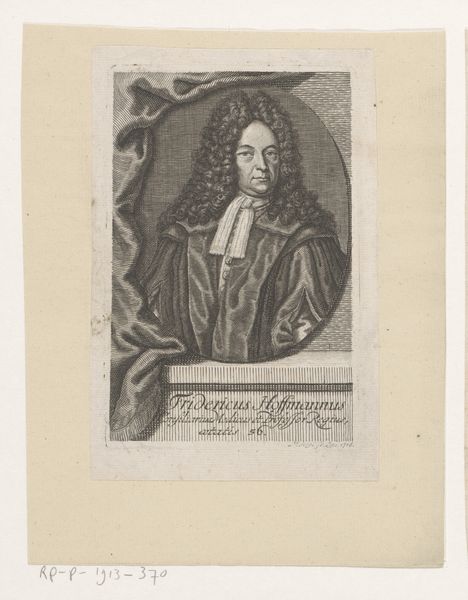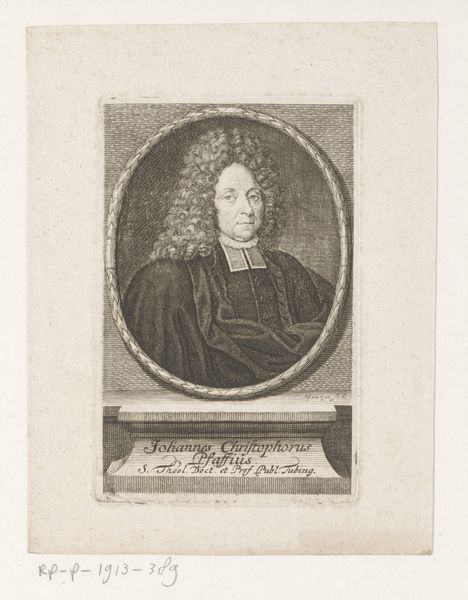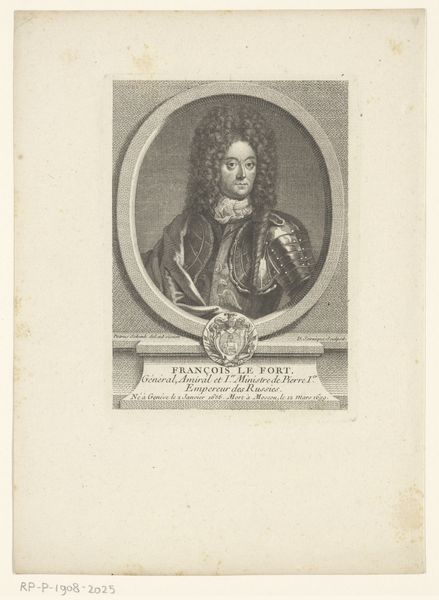
Dimensions: height 124 mm, width 82 mm
Copyright: Rijks Museum: Open Domain
Editor: Here we have Heinrich Pfenninger’s "Portret van Johann Bernoulli (I)," a print dating between 1759 and 1815. It strikes me as quite formal and precise, given the delicate lines of the engraving. What do you see in this piece from a formalist perspective? Curator: Indeed, the linear precision is paramount. Note how Pfenninger employs line—thin and controlled—to delineate form, particularly in the rendering of Bernoulli's wig. The tight, almost academic handling of the engraved lines gives texture and volume. Consider the oval frame; its function is purely compositional, serving to isolate and accentuate the subject's face, compelling a focus on the elements within that defined space. How does that focused presentation guide your reading of the subject, do you think? Editor: I think that it highlights Bernoulli's features and forces me to engage with them closely, like, perhaps, focusing on how intelligent he appears. Curator: Precisely. It's the formal arrangement directing your interpretation. Also, note the limited tonal range, a common feature of engravings. Pfenninger expertly coaxes subtle variations from essentially a monochrome palette. Consider how this constraint shapes the mood and perceived depth of the portrait. Is there something missing given the reduction in color, do you think? Editor: The lack of color does give it an air of seriousness, almost like a historical document instead of a vivid depiction. It highlights the design more than anything else. I didn’t realize how much these elements could convey meaning by themselves. Curator: It is precisely in the composition, form and method that the object transmits intention, and consequently, meaning. This is something I take away from this encounter as well!
Comments
No comments
Be the first to comment and join the conversation on the ultimate creative platform.
